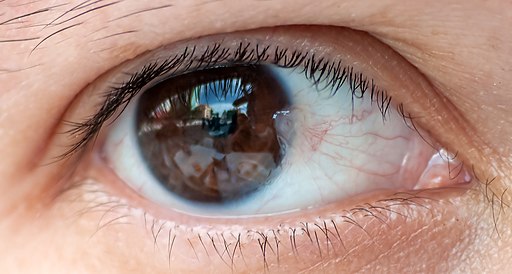Pterygium: What it is and How to Prevent it

Pterygium is a non-cancerous eye condition sometimes called ‘surfer’s eye’. This is because it tends to occur in people who spend a lot of time outdoors in sunny and sandy conditions, such as at the beach.
The condition manifests as a fleshy overgrowth of the clear cornea or conjunctiva of the eye. The growth may be raised and contain visible blood vessels, and can occur in one or both eyes. It usually grows from the inner corner of the eye (although not always) and is triangular or ‘wing’ shaped.
Pterygia usually don’t cause any pain but can be irritating. Symptoms may include mild eye pain, inflammation, bloodshot eyes, itching, burning and vision problems if a pterygium spreads across the eye.
The main risk factors for a pterygium growth are sun exposure, dust, sand, dry windy conditions, sweat in the eyes, and being older (over 60). With Australia being a largely sunny place where we like to spend time outdoors, the condition is not uncommon. Australia has one of the highest rates of pterygia in the world, especially among outdoor workers or sporting participants, rural areas, and older people.
Diagnosis and treatment
A qualified optometrist will be able to determine if you have a pterygium based on observation. If an optometrist diagnoses you with the condition, you may be referred to an ophthalmologist (a specialist in eye disorders) for further examination.
Treatment options depend on severity, and may include eye drops for irritation or lubrication, or surgery in cases where the condition appears to be spreading across the cornea. To prevent a pterygium getting any worse, your eye doctor may advise you to take preventative measures.
Preventing pterygia
The most important way to prevent pterygia from occurring (or worsening) is to wear sunglasses that protect your eyes from the elements, especially UV-radiation. UV damage accumulates over time, so the sooner you start protecting your eyes the better.
For best results, your sunglasses should have the following features:
- Lenses that are large enough to block out sunlight.
- Wide or wrap-around frames.
- A lens category of 2, 3 or 4 (sunglasses in categories 0 or 1 are merely fashion).
- Compliance with Australian Standard AS/NZS 1067.1:2016.
- A high sun-protection factor – the Cancer Council recommends sunnies with an Eye Protection Factor of 9 or 10 where possible, as these provide the most protection.
Wearing sunglasses can help prevent many other eye conditions as well, such as sunburn of the cornea, cataracts and cancers. Our previous article has more information on what to look for in a pair of new sunglasses.
A broad-brimmed hat is also recommended while out in the sun, as this provides additional protection on top of your sunglasses.
If you already have the condition, the above actions may help slow it down. You should also continue to see your optometrist or eye doctor at least every two years for monitoring.
Regular eye checks with your optometrist are important to monitor the health of your eyes and determine whether you need to update your glasses. Go here to book an appointment.
Image by Wilfredor, CC BY-SA 4.0 via Wikimedia Commons
Share on


















